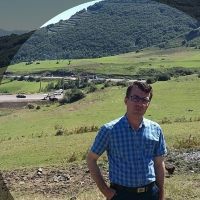The Analysis of the Changes of the Hydrological Flow Indices Affected by Dam Construction in Zarrinehrood and Saruqchai Rivers of West Azerbaijan Province
Author(s):
Article Type:
Research/Original Article (دارای رتبه معتبر)
Abstract:
Introduction
The ease of the use of river water resources has led to an extensive exploitation and, thus, the alteration flow regime. Although human manipulation on the river flows has social benefits, it alters natural ecosystems and threatens biodiversity by changing natural flow regimes. Hydrological changes caused by dams and their related environmental problems have excited many concerns for hydrologists, ecologists, and policy-makers. The high number of constructed dams, the diversion of water, the exploitation of groundwater, the canalization of waterways and, the transfer of water into basins in the world have led to large-scale hydrological changes in the environment and aquatic ecosystems. The assessment of flow changes is important to understand and modify the considerable effects of dams on river systems. Therefore, the purpose of this study was to investigate the quantitative changes in hydrological parameters of the flow in four main groups including Low flows, Peak flows, Flow duration, and Flow variability in Zarrinehrood and Saruqchai Rivers in West Azerbaijan province.
Methodology
In this study, the percentage of changes of the Zarrinehrood and Saruqchai river flow regime, affected by the construction of dams, were evaluated. In addition, the daily discharge data from hydrometric stations were obtained. The recorded discharge data in the time periods of 1955 to 2012 were analyzed in this study. The values of 18 hydrological indicators categorized in four main groups including Peak flows, Low flows, Flow duration and Flow variability were calculated. In this regard, the percentage difference of each hydrologic index was calculated. Next, the hydrologic indices were plotted in the pre and post periods of the dam construction, and the results of the Sariqamish hydrometric station was presented as an example. Finally, the triple diagram model and the Surfer software were used to determine the variations of the percentage of difference in indicators against the mean discharge values over the study period.
Discussion
According to the results, the Min and Q10 indices with values of 287.42 and -45.57%, had respectively the highest and the least changes The Q95 index and the rate of falling indicator showed an upward trend in the downside of the Miandoab hydrometric station. The highest percentage of difference of low flow group was related to the Miandoab hydrometric station, which indicated the increase of the minimum flow. The lowest percentage of difference was observed at the Alasaqqal-Chap hydrometric station. The Miandoab and Safakhaneh stations showed the highest and lowest percentage of differences in Peak flow group after dam construction. The changes of all hydrologic indices were small in low flow discharge and increased with greater amounts of river flow discharge in the Sariqamish hydrometric station, especially in discharge values of 0 to 20 cubic meters per second.The Miandoab hydrometric station also confirmed the previous results, which showed a decrease in the hydrological indexes of the arrinehrood River flow regime in 0-40 cubic meters per second over the study period, while the changes in the river flow regime had increased in the discharges intervals of more than 140 cubic meters per second.
Conclusion
To summarize, the studied hydrological indices have been altered due to the dam construction. Indeed, they are decreasing or increasing based on the nature of indexes to characterize the flow variations. Also, according to the values of average difference percentage of indices in each main group, it can be said that the groups of Low flows, Peak flows, and Flow duration in the period after the construction of the dam compared to the period before the construction of the dam were respectively 303.37, 18.57 and 943.38% at the Miandoab river gauge station under the effect of Nowruzlu Dam. Also, triple diagram model confirmed that the difference in the flow regime indices were high in higher mean river discharge values. Considering the quantitative results related to the difference percentage in hydrologic indicators, the constructed dams considerably altered the natural flow regime of Zarrinehrood and Saruqchai Rivers. Therefore, it is necessary to consider the changes of hydrological regime resulting from the construction of dams to maintain the ecological flow requirements of the river ecosystem and ensure the use of surface water and healthy aquatic environmental condition.Keywords:
Language:
Persian
Published:
Hydrogeomorphology, Volume:5 Issue: 18, 2019
Pages:
57 to 77
magiran.com/p1999870
دانلود و مطالعه متن این مقاله با یکی از روشهای زیر امکان پذیر است:
اشتراک شخصی
با عضویت و پرداخت آنلاین حق اشتراک یکساله به مبلغ 1,390,000ريال میتوانید 70 عنوان مطلب دانلود کنید!
اشتراک سازمانی
به کتابخانه دانشگاه یا محل کار خود پیشنهاد کنید تا اشتراک سازمانی این پایگاه را برای دسترسی نامحدود همه کاربران به متن مطالب تهیه نمایند!
توجه!
- حق عضویت دریافتی صرف حمایت از نشریات عضو و نگهداری، تکمیل و توسعه مگیران میشود.
- پرداخت حق اشتراک و دانلود مقالات اجازه بازنشر آن در سایر رسانههای چاپی و دیجیتال را به کاربر نمیدهد.
In order to view content subscription is required
Personal subscription
Subscribe magiran.com for 70 € euros via PayPal and download 70 articles during a year.
Organization subscription
Please contact us to subscribe your university or library for unlimited access!



